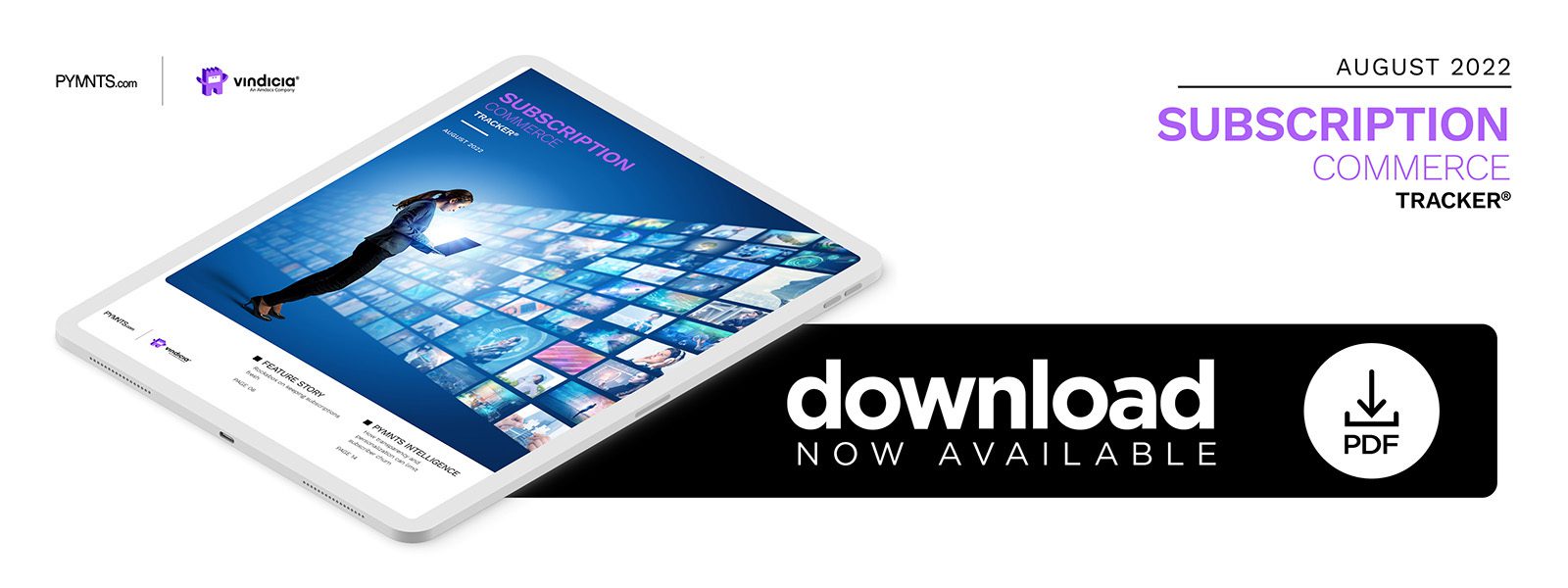PYMNTS Intelligence: How to Avoid Becoming a Consumer’s Unwanted Subscription

Subscriptions have become a source of both promise and peril for consumers. The increase in subscription-based goods and services presents people with more choice and flexibility, and they are signing up in record numbers. One survey found that half of all consumers now subscribe to video streaming services, while 41% have a membership with a shopping service such as Amazon Prime. Audio, news and gaming subscriptions are also popular.
The downside is that consumers are becoming overwhelmed with the abundance of subscription options and frustrated with how difficult it can be to keep track of them. Determining the overall cost of their subscriptions is also a major concern. Since subscriptions are just going to become more common, these frustrations will continue to mount.
This month, PYMNTS examines the problems consumers are having with subscriptions, why they might view a subscription as unwanted and how offering transparency and personalization can limit subscriber churn.
Unexpected Fees and Underestimated Costs
One of the most common sources of subscription-related frustration are unexpected fees. According to a recent survey, 51% of people who have subscription-based accounts have run up against unwanted charges at some point, with younger generations the most impacted. Fifty-eight percent of millennials and 57% of Generation Z have encountered this issue. In contrast, under half of baby boomers and Generation X have reported experiencing unwanted charges.
Unexpected fees often happen when a free trial turns into a paid subscription without the customer realizing. Sometimes customers simply forget about a subscription, while other times they may have signed up accidentally. Whatever the reason behind the unexpected charges, costs are adding up. According to one survey, consumers are spending a combined $273 per month on subscription services, up from $237 in 2018. This jump may seem small, but it translates to an increase of roughly $430 per year. Another survey reported monthly costs at $219, making yearly costs slightly lower but substantial nonetheless. Since customers are already paying a lot for subscriptions, any unwanted fees are quite impactful.
The issue with unwanted fees is worsened by the fact that consumers are prone to significantly underestimate the combined cost of their subscriptions. In the latter survey, the average respondent estimated paying only $86 per month, not $219 — a $133 difference that indicates many consumers are unaware of how costly their subscriptions are. Many are simply forgetting the real costs, as 74% of respondents said it was easy to forget recurring subscription costs and 42% said they stopped using a service but forgot to cancel. A striking 6% of streaming subscribers reported they do not even know how much they spend on these services per month.
Automatic Payments and Difficulty Canceling
Next to unexpected costs, the difficulties consumers face when trying to cancel a subscription are among their biggest frustrations. One survey of subscription holders revealed that 34% said it was difficult to cancel or turn off automatic payments, including 10% who said it was very difficult. According to another report, 56% of consumers say recurring payments are hard to keep tabs on and it takes them up to three months, on average, to cancel unwanted recurring payments.
Websites are often designed to make unsubscribing a challenge, for example, with consumers frequently encountering unsubscribe buttons that are intentionally obscured and pop-ups trying to keep them from leaving. Sometimes consumers cannot even cancel online, instead being forced to call the company to cancel the account in a needlessly burdensome process.
Faced with mounting public pressure and the threat of regulation, some companies are making it easier for customers to end their subscriptions. Amazon Prime, for example, will soon allow European users to unsubscribe with two clicks of prominently displayed buttons. In the United States, the Federal Trade Commission (FTC) has also set its sights on reining in companies’ ability to trap consumers in subscription services.
Limiting Subscription Churn
Rising costs and growing frustration are leading consumers to reevaluate their paid subscriptions and cancel those they deem unwanted in a process known as churn. Video streaming subscriptions are particularly vulnerable, with a churn rate of about 37% in the U.S.
Some amount of churn is inevitable, but there are ways for companies to reduce cancellation rates. One is to focus on involuntary churn, commonly caused by a failed transaction. The failure could be due to a changed ZIP code or an expired card, events of which consumers may not be aware. This type of churn is best addressed by an improved billing process that automates payments. Done correctly, a billing system can reduce churn by 30% or more while increasing revenue by 5%. It can also drive subscriptions. The key is to make the cancellation process straightforward by automating billing while also empowering consumers to know how much they are paying and when.
Personalizing the customer experience is another way to reduce churn. Many consumers feel their subscription services are not doing enough, with 60% of video streaming consumers saying they are paying for content that is not relevant to them. Companies should reevaluate their offerings and devise ways to provide customized consumer experiences.

